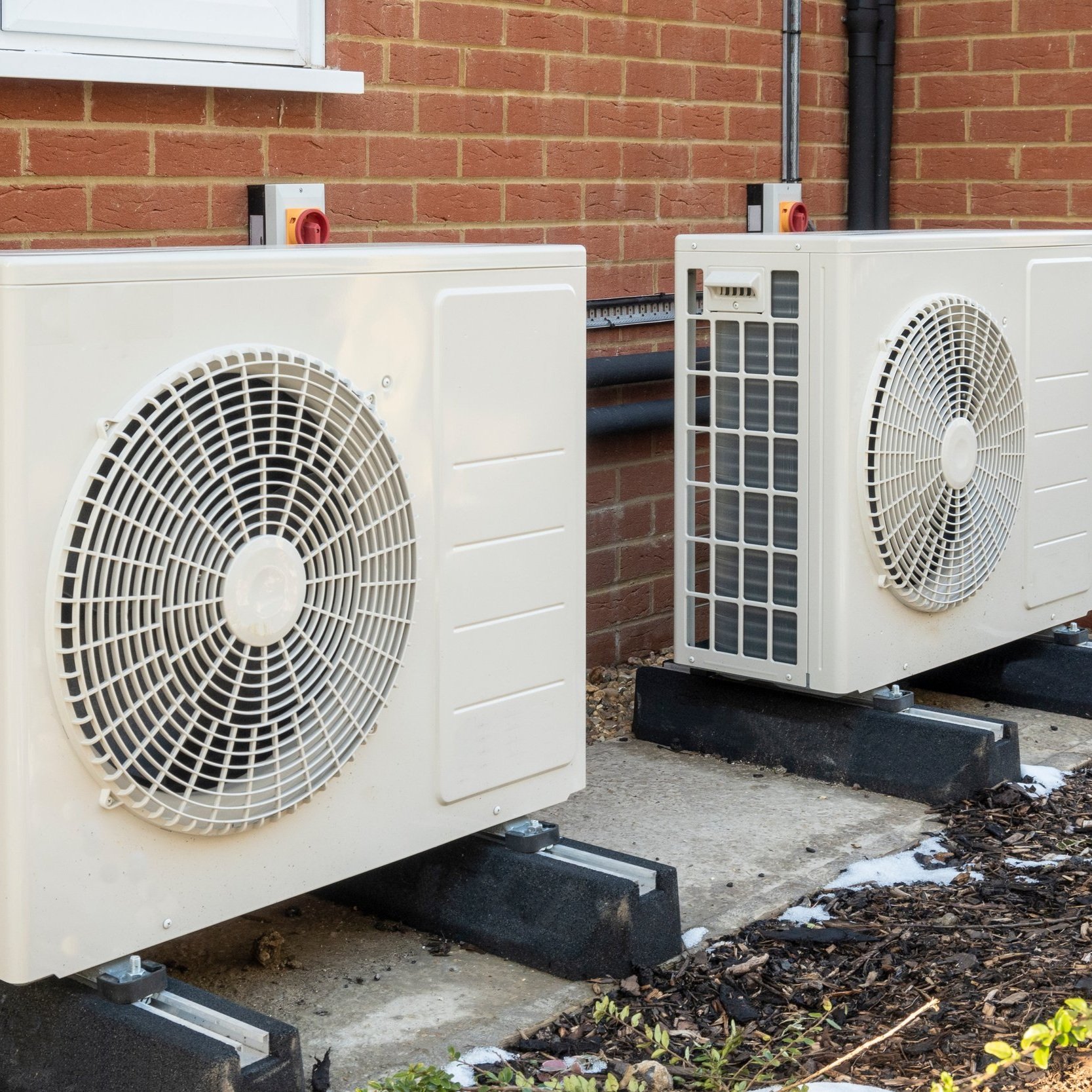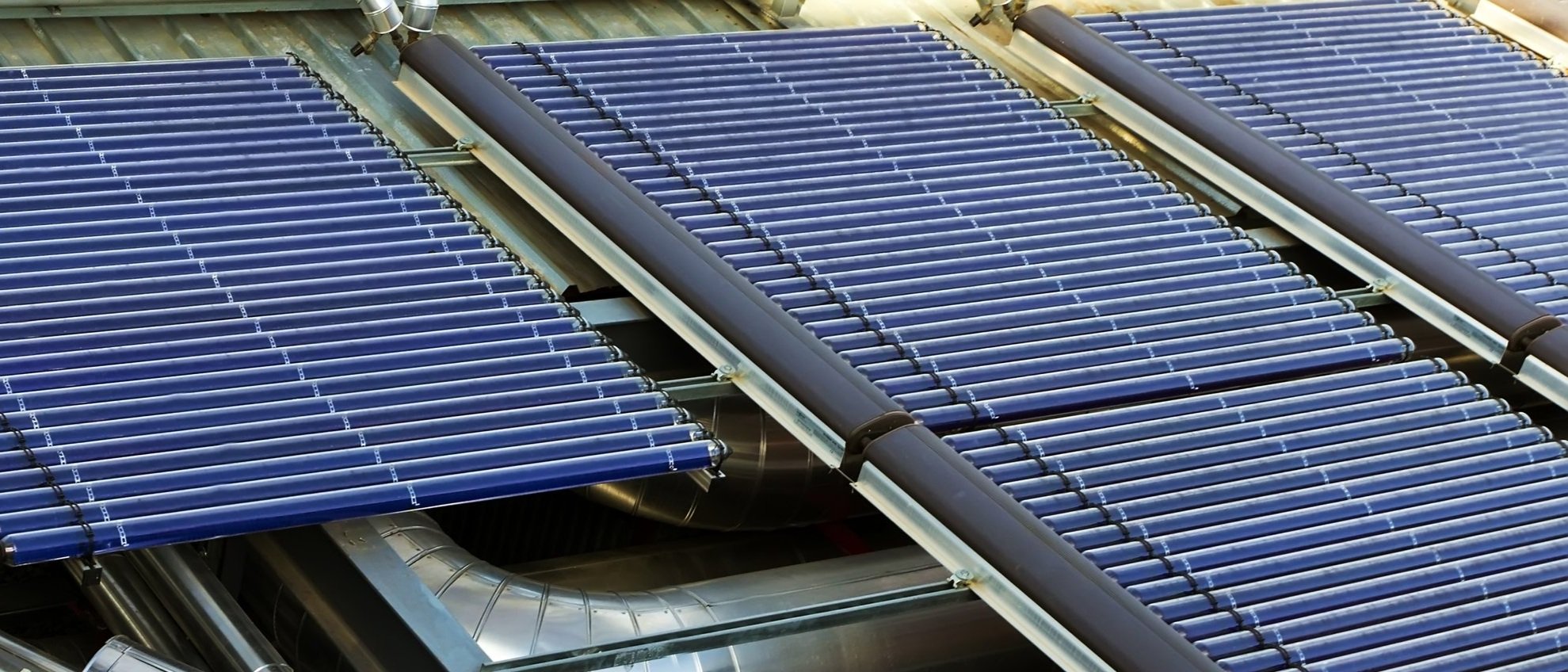
Heating & Hot Water
IN MOST HOMES, CHANGING THE BOILER IS Probably the most cost effective way of reducing emissions.
While this could be a definite choice if your boiler is 15-20 years old, this can also be an option for younger boilers. However, if you want to wean yourself off fossil fuels you need to look at renewable heat sources, including solar thermal, heat pumps and biomass.
Solar thermal
Panels on the roof are heated by the sun, which then heat a water tank. Most systems are only designed to produce hot water and sized accordingly. This is quite expensive for the amount of energy saved, as the average UK hot water usage is about 2,000kWh. With gas heating this is only £80-90pa, assuming 50% saving on hot water this is a long payback. If your home is heated by more expensive energy then solar thermal can radically improve energy efficiency.
Another consideration is labour. If your primary heat source is logs, then not having to light the boiler can be a relief. Here the costs can be shared as log burners need a large heat store so that they can burn efficiently and store the heat produced for later. This heat storage can be used by the solar thermal system in summer. This in turn allows a larger system to be installed, which then allows some level of space heating assistance to be provided from the sun too.

OTHER THAN A NEW BOILER, there are VARIOUS renewable options.
Heat pumps
There are various types of heat pumps, but in most domestic retrofit situations there are 2 basic types for use – Ground Source (GSHP) and Air source (ASHP). Water source is a bit specialised and unusual. Air source divides into ‘air to air’ and ‘air to water’. There are also Exhaust Air Source Heat Pumps (EASHP) that can achieve a slightly better performance by retrieving heat from outgoing ventilation.
They all work on the same principle – using the way heat is pulled from, or produced by, liquids turning to gases and back. This is called state change. They all use a compressor that does these changes so heat is pulled from the outside and then the state change goes the other way inside taking the heat previously absorbed and emitting it. Think of it like a fridge – but the bit in the back of the fridge is inside the house, the inside of the fridge is the outside.
Will a heat pump work for your home?
The key figure when working out whether a heat pump will work for you is the Coefficient of Performance (CoP). This is the ratio of electricity put in driving the compressor to the amount of heat in the house.
Crucially, this is not fixed for any given machine it depends on the temperature difference needed. If it is very cold and hot water is needed for washing the CoP will be nearly 1 for many heat pumps. However, if it is designed with a low temperature heating system, such as underfloor, then the CoP rises 3-4 for air source and 4-5. This means that between a third and a fifth of the amount of energy put in is available for use.
Despite the use of electricity this is how heat pumps get to be called renewable heat. However, manufacturers’ CoPs need to be looked at in a similar way to car testing. Heat pumps can produce very good CoPs in controlled conditions, but many have found these difficult to realise in real life. It is worth seeking out independent test data.
The more nuanced figure of available is the Seasonal Performance Factor, which is the same measure as CoP but in use not from a test certificate. In the 2011 Heat Efficiency test from the well respected Fraunhofer Institute, GSHP’s came out averaging 3.88 and ASHP at 2.88.
Biomass
For most of the retrofits, this is wood and it comes in 3 different versions.
Wood log
The easiest to use and most easily locally sourced but least automated, you will become intimately acquainted with every piece of wood you burn. This can work well for behaviour change. The equipment in which you can burn it is considerably cheaper than the other options.
Wood pellet
Compressed sawdust can be treated almost as a liquid fuel. It can be piped into a store from a wagon and boilers can have auto-ignition systems so you don't need to light them yourself. However, it is costly as the burners are expensive and is more carbon intensive in production than the other options needing manufacture. Maintenance can also be an issue and some burners can be temperamental about chip quality
Wood chip
Readily available locally, the quality can vary and it can have bits of inert material in it, so it requires a heavier duty burner. These are often not small enough for the average home but may suit larger ones or non-domestic retrofits. Noise and maintenance can also be issues.
Other considerations with biomass
In all cases space will need to be made for wood storage. An average UK home would burn 10 cubic metres of logs in a year – hence the need for radical demand reduction first.
Burners come in two basic forms: boilers and stoves. Boilers then subdivide into on show versions and ones that need a plant space to hide them in. If the demand reduction is high enough (<£2,500kWh/A) then some of the on-show versions can provide enough heat for space heating and hot water. We’ve only managed to specify this on one house so far but it helped make it the best performing houses among 120 other deep retrofits from the Retrofit for the Future.
Stoves only provide heat no hot water. If the building needing heating is in a smoke control area then the burner will need to have a DEFRA exemption.
Gallery: Heating & Hot Water
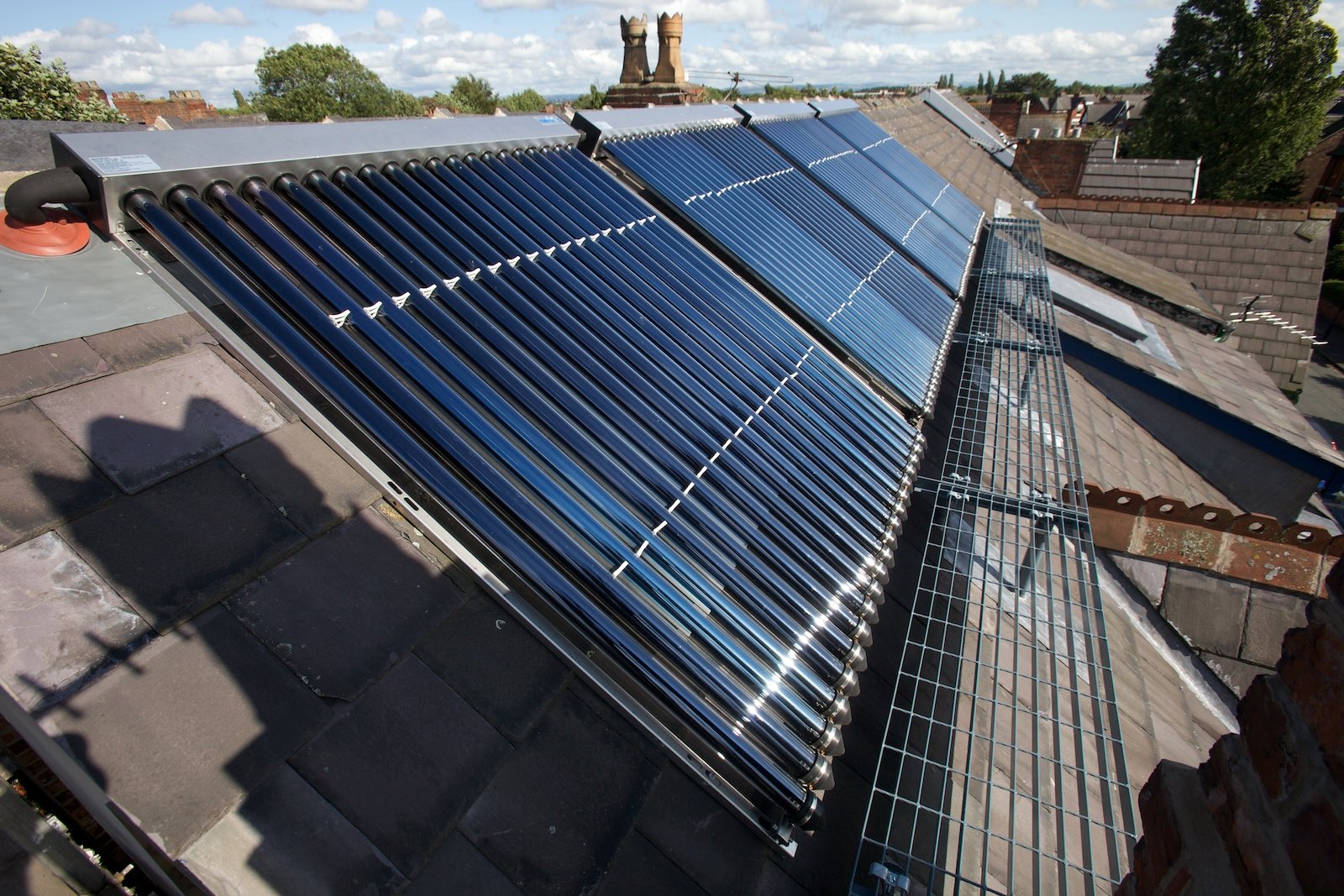
Solar thermal heating
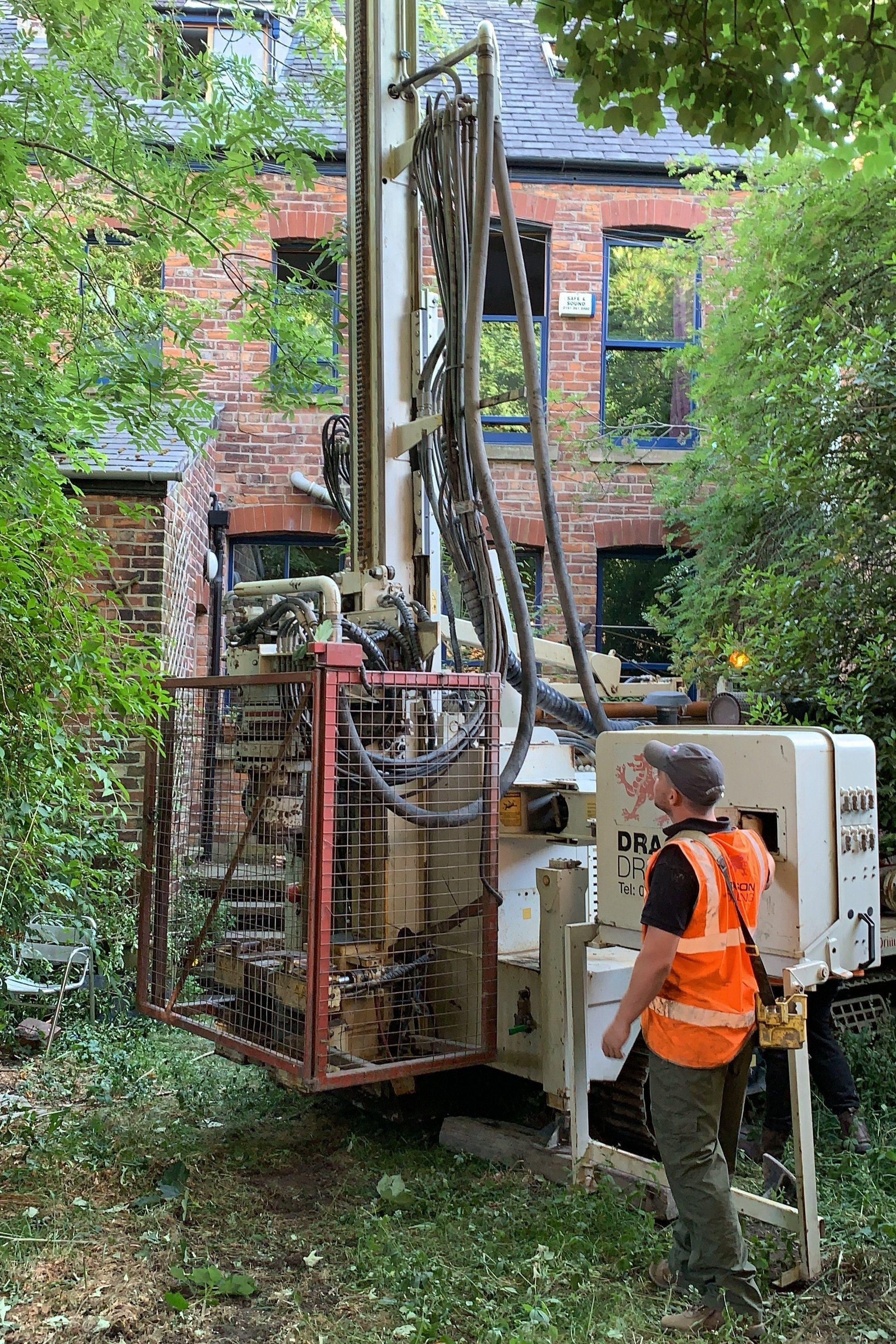
Ground source heat pump - drilling rig for borehole
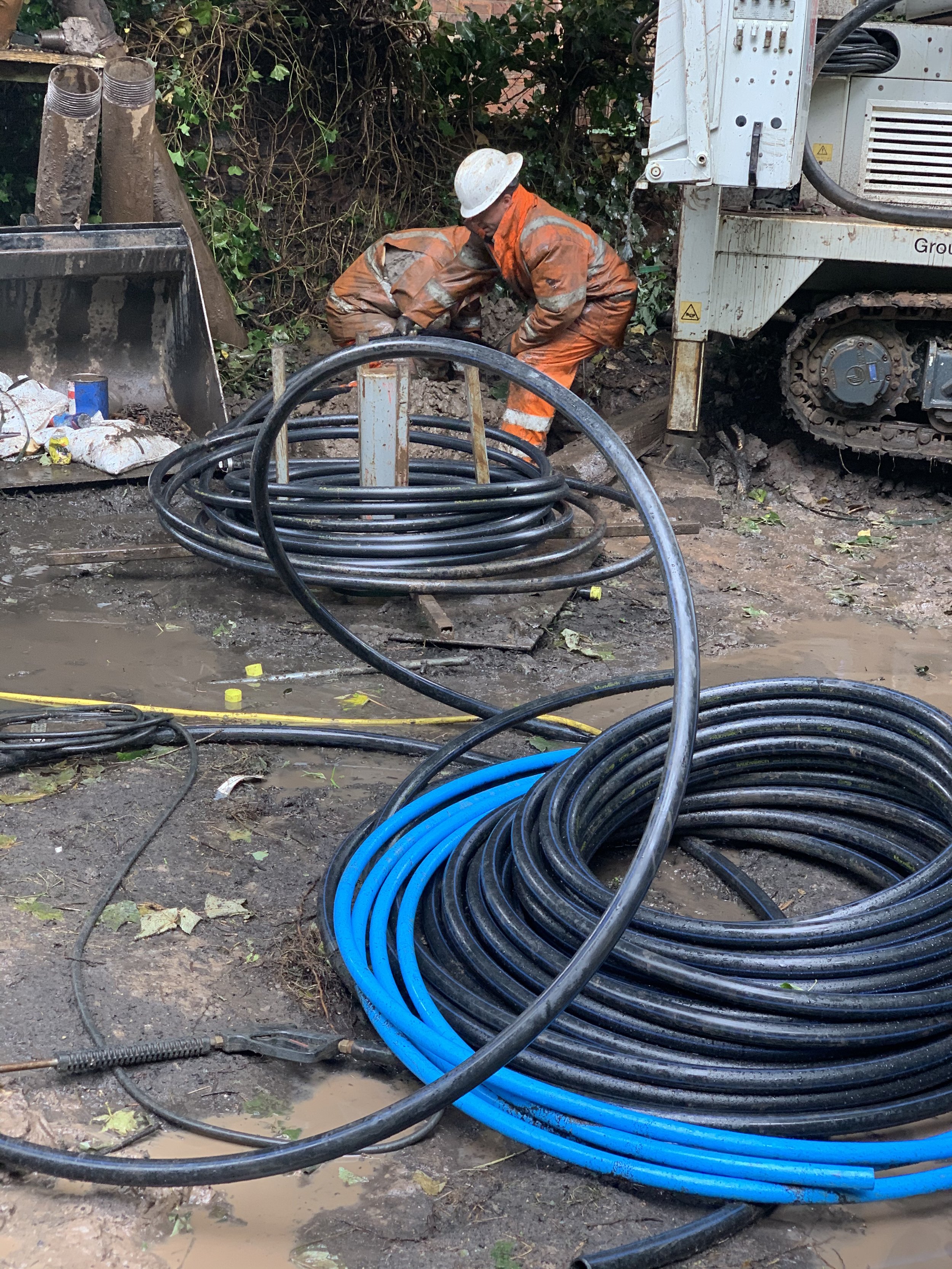
Ground source heat pump - installing the pipes into the boreholes
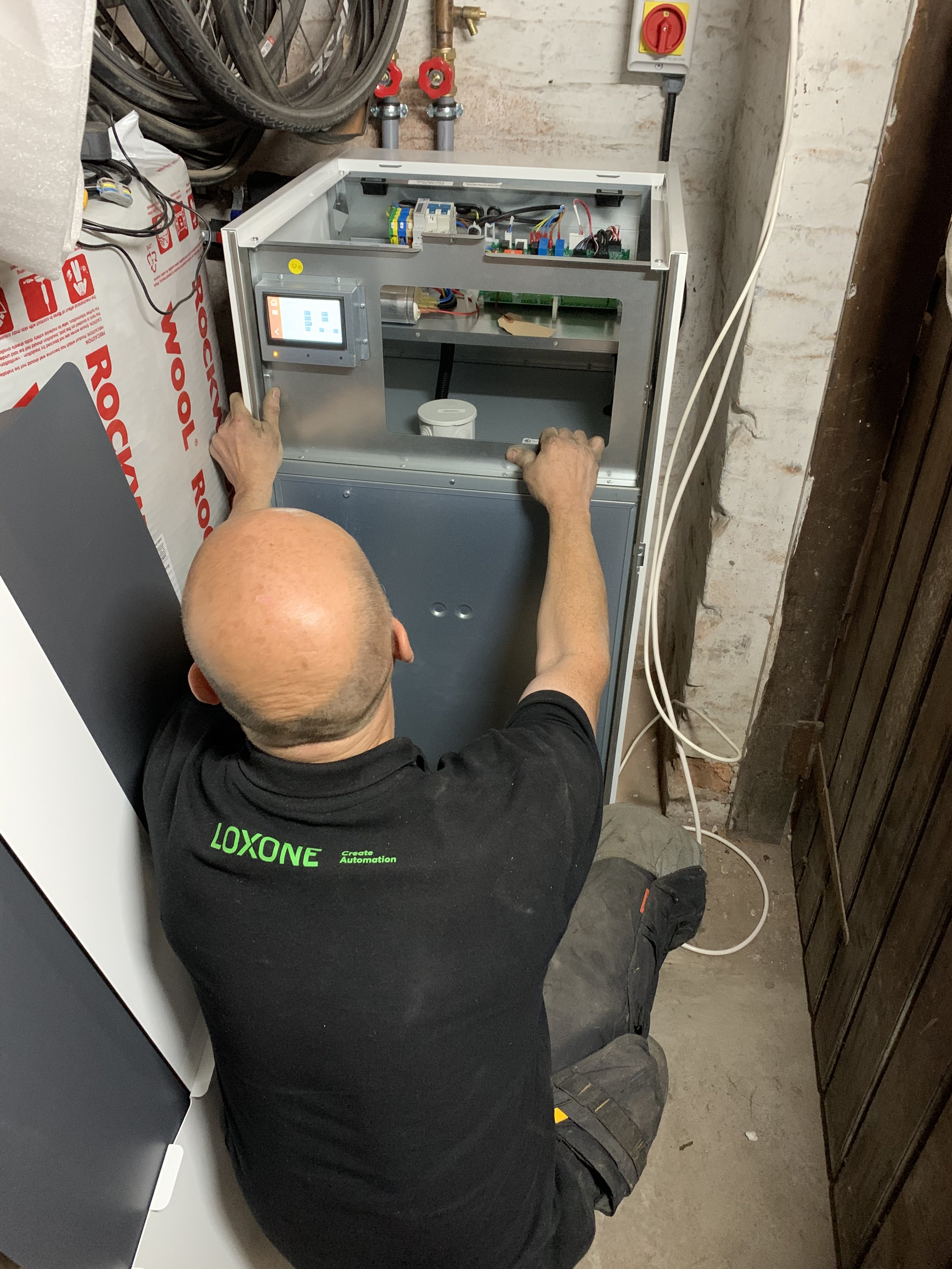
Ground source heat pump - commissioning


